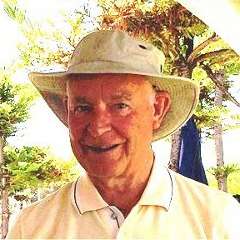Christian Spuck’s acclaimed reinvention of Verdi’s powerful Messa da Requiem has finally arrived in Adelaide for the 2023 Festival of Arts. Covid bans on travel have delayed it for years, so all the more eager the anticipation. With inspiring choreography, Spuck has added a new dimension to the work. Relegating the Adelaide Symphony Orchestra to the pit, Ballett Zürich blended with an expanded Adelaide Festival Chorus to create a visually stunning drama, taking Verdi’s Requiem to a new and richer level.
Spuck has said Verdi’s funeral mass “is secular and is not a solemn religious mass”. He makes that clear in his production, which he intends to be an expression of the way humans deal with death and the ultimate questions of life. The Requiem Mass of Verdi’s day, as is evident from its text, reflected the culture of the day emphasising judgment, fear and despair, very different from today’s Catholic liturgy focusing on hope, faith, promise and resurrection. There is a bit of both in Spuck’s production.
Intense emotionality, evoked from the 16 tableaux contained within the score, resonated through both dancers and singers alike (the Festival Chorus’s talents now energised with added movement skills), the abstractedness of voice and movement able to express messages and emotions far beyond what words alone can convey. It was powerful theatre that spoke directly to the soul. The lack of surtitles or translations was a bonus, removing all distraction from absorbing the spectacular sight and sounds.
The performance began slowly, the orchestra playing pianissimo. A lone dancer edged tentatively across the back wall. “Requiem aeternam dona eis, Domine” floated softly and solemnly from the chorus, dressed in black (as was everyone) and overflowing both sides of the stage. We had begun. The next hour and a half of theatre was absolutely spellbinding. Everyone and everything connected with the performance fell into place. It was engrossing. Chorus master Christie Anderson had fine-tuned the enlarged Adelaide Festival Chorus into a brilliantly cohesive, acoustically amazing, solemn, measured instrument, with the apparent ability of everyone running everywhere all at once, at one time gathering like swarming bees reaching halfway up the wall, another time undulating like waves on the shore, yet another time scattering all over the stage, hiding the dancers in their midst. But it was the exceptional skill of their singing that impressed all night. The soloists were also brilliant: Pelham Andrews’ rich, mellow bass was at its best; mezzo Caitlin Hulcup gave a clear, rich, resounding performance; soprano Eleanor Lyons sang sweet and true, at her best blending with the other singers; and tenor Paul O’Neill was commanding.
Regrettably the dancers of Ballett Zürich were simply listed alphabetically in the programme book which stated that “every single member of the ballet company is part of this production and many different dancers have been entrusted with solos”. Each one was impressive, although I would have liked to have been able to name those who stood out significantly. The dancers, chorus and soloists melded into one organic ever-changing team. Some were singled out at the final curtain call (and they deserved to be). Spuck also emerged for a rapturous curtain call.
Johannes Fritzsch, who has conducted all over Australia, was at his best with the Adelaide Symphony. Relegated to the pit, they were outstanding. From pianissimo beginning, to crashing brass and timpani in the Dies irae refrains, they were the glue that underscored and bound the performance.
Martin Gebhart’s lighting was powerfully effective, sometimes fully in the background, at other times very visible, like the portable spotlight positioned on stage and projecting shadows of the dancers onto an otherwise empty wall. Emma Ryott’s choice of black for the costumes fitted the early atmosphere reflecting on death and judgement, until colour started to appear on the dancers by the Agnus Dei. This tableaux became richly reflective, started by Lyons, joined by Hulcup, then finally taken up by the chorus, with the additional pas de deux of intricate hand-arm movements and couplings to form a most meditative sequence.
The performance ended peacefully. As the chorus softly proclaimed “Lux perpetua luceat eis” faded away, a lone dancer gently carried a palely dressed Pietà-like ballerina to front of stage to produce a more dramatically pleasing conclusion than the original Zürich production.




